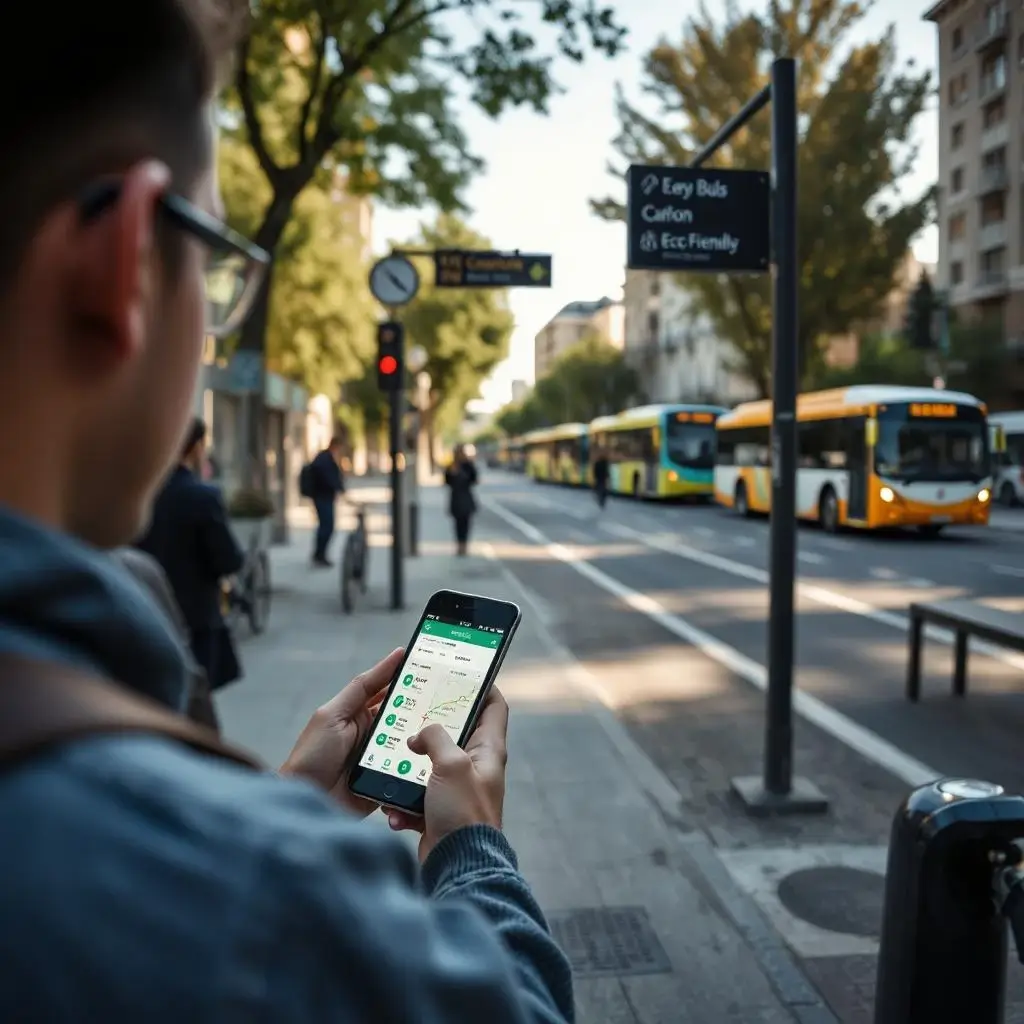1. Introduction
- Public transport plays a crucial role in reducing carbon emissions and minimizing traffic congestion. With the rise of technology, public transport apps have made commuting more efficient, encouraging people to choose eco-friendly travel options.
- This article explores how public transport apps help reduce carbon footprints, their benefits, and how to integrate them into daily life.
2. The Environmental Impact of Personal Vehicles
High Carbon Emissions: Cars contribute significantly to greenhouse gases, worsening climate change.
Traffic Congestion: More vehicles on the road mean higher fuel consumption and pollution.
Fuel Consumption: Gasoline and diesel-powered vehicles deplete fossil fuel resources.
Urban Air Pollution: Vehicle emissions lead to smog and poor air quality in cities.
Resource-Intensive Production: Manufacturing cars requires metals, plastics, and energy-intensive processes.
3. How Public Transport Apps Help Lower Emissions
Optimized Routes: Apps provide real-time navigation to minimize unnecessary travel.
Ride-Sharing Integration: Some apps offer carpooling or shared transport options.
Encouraging Public Transit: Real-time updates make public transport more convenient.
Reduced Idle Time: Less waiting at stations decreases energy waste.
Carbon Footprint Tracking: Some apps display carbon savings for users.
4. Best Public Transport Apps for Green Commuting
Google Maps: Provides public transport routes and schedules worldwide.
Transit App: Real-time public transport updates and multimodal travel planning.
Citymapper: Offers optimized routes with biking and walking integrations.
Moovit: Covers real-time bus, train, and metro updates in various cities.
Uber and Lyft Shared Rides: Ride-sharing features reduce single-passenger trips.
5. How to Use Public Transport Apps Effectively
Plan Trips in Advance: Avoid last-minute rush and optimize routes.
Check Real-Time Updates: Minimize waiting time and avoid delays.
Use Multi-Mode Transport Options: Combine buses, trains, and biking.
Opt for Shared Rides When Necessary: Reduce single-occupancy trips.
Monitor Carbon Savings: Apps like Moovit show eco-friendly transport benefits.
6. Cost Savings from Using Public Transport
| Transport Mode | Average Cost Per Month | Potential Savings |
| Personal Car | $300 - $500 | High fuel and maintenance costs |
| Public Transport | $50 - $150 | Affordable monthly passes |
| Ride-Sharing | $100 - $250 | Cost varies by location |
| Biking/Walking | Free | Zero costs and maximum savings |
7. Additional Features of Public Transport Apps
Offline Maps: Access routes without an internet connection.
Integration with Digital Payments: Pay fares through mobile wallets.
Eco-Friendly Travel Suggestions: Highlighting walking and cycling options.
Crowd Density Indicators: Helps choose less crowded routes.
Multi-City Support: Works in multiple locations for seamless travel.
8. Encouraging a Greener Commute Through Apps
Set Green Goals: Track and reduce carbon emissions with transport apps.
Use Subscription Passes: Save money and encourage frequent public transport use.
Try Hybrid Commuting: Combine biking and public transport for a sustainable routine.
Educate Others: Encourage family and friends to use public transit.
Engage in Community Programs: Participate in government and private eco-travel initiatives.
9. Overcoming Challenges in Using Public Transport Apps
Limited Coverage Areas: Some cities have poor app support.
Unreliable Real-Time Data: Occasional inaccuracies in bus and train schedules.
Payment Integration Issues: Some regions lack seamless digital payment options.
Language Barriers: Certain apps may not support multiple languages.
Connectivity Problems: Internet access can be unstable in some areas.
10. The Role of Governments and Cities in Promoting Public Transport Apps
Investing in Digital Infrastructure: Enhancing real-time tracking and connectivity.
Encouraging App Development: Supporting innovation in transport solutions.
Subsidizing Public Transport: Making fares affordable and competitive.
Partnering with Tech Companies: Expanding transit app features.
Implementing Policies for Sustainable Travel: Incentives for app-based eco-transportation.
11. Case Studies: Cities Successfully Using Public Transport Apps
| City | App Used | Impact |
| London | Citymapper | Increased public transport adoption |
| New York | MTA App | Real-time updates improved efficiency |
| Singapore | MyTransport.SG | Reduced car usage and emissions |
| Berlin | BVG Fahrinfo | Multi-modal transport options enhanced eco-travel |
| Tokyo | Tokyo Subway App | Simplified transit for residents and tourists |
12. The Future of Public Transport Apps and Sustainability
AI-Powered Smart Routing: Predicts best routes based on traffic conditions.
Integration with Green Vehicles: Apps supporting electric and hybrid transport.
Expanded Micro-Mobility Options: More shared scooters and e-bikes.
Blockchain-Based Ticketing: Secure and eco-friendly digital transactions.
Global Standardization: Unified systems for worldwide travel convenience.
13. How You Can Make a Difference with Public Transport Apps
Choose Public Transit Over Driving: Reduce personal vehicle emissions.
Promote App Usage: Share benefits with colleagues and friends.
Advocate for Better Public Transport Systems: Support city initiatives.
Request More Features from App Developers: Improve sustainability functions.
Stay Informed: Follow updates on green public transport solutions.
14. Conclusion
Public transport apps provide a powerful tool for reducing carbon footprints by optimizing routes, minimizing car dependence, and promoting shared travel options. As governments and individuals embrace digital commuting solutions, these apps will continue to play a key role in creating a greener future.
Switching to public transport with the help of digital tools is an easy yet impactful step toward sustainability. By making informed commuting choices, individuals can significantly lower their environmental impact while saving time and money.
Disclaimers
App availability and features may vary by region.
Savings estimates depend on individual travel habits and local transport costs.
Some apps require internet connectivity for real-time updates.
Digital payments may not be universally supported across all transit networks.
Environmental benefits are influenced by overall adoption rates and public infrastructure.
Author: Dipika Kumari
Publication Date: 27-03-2025
Email: [email protected]
